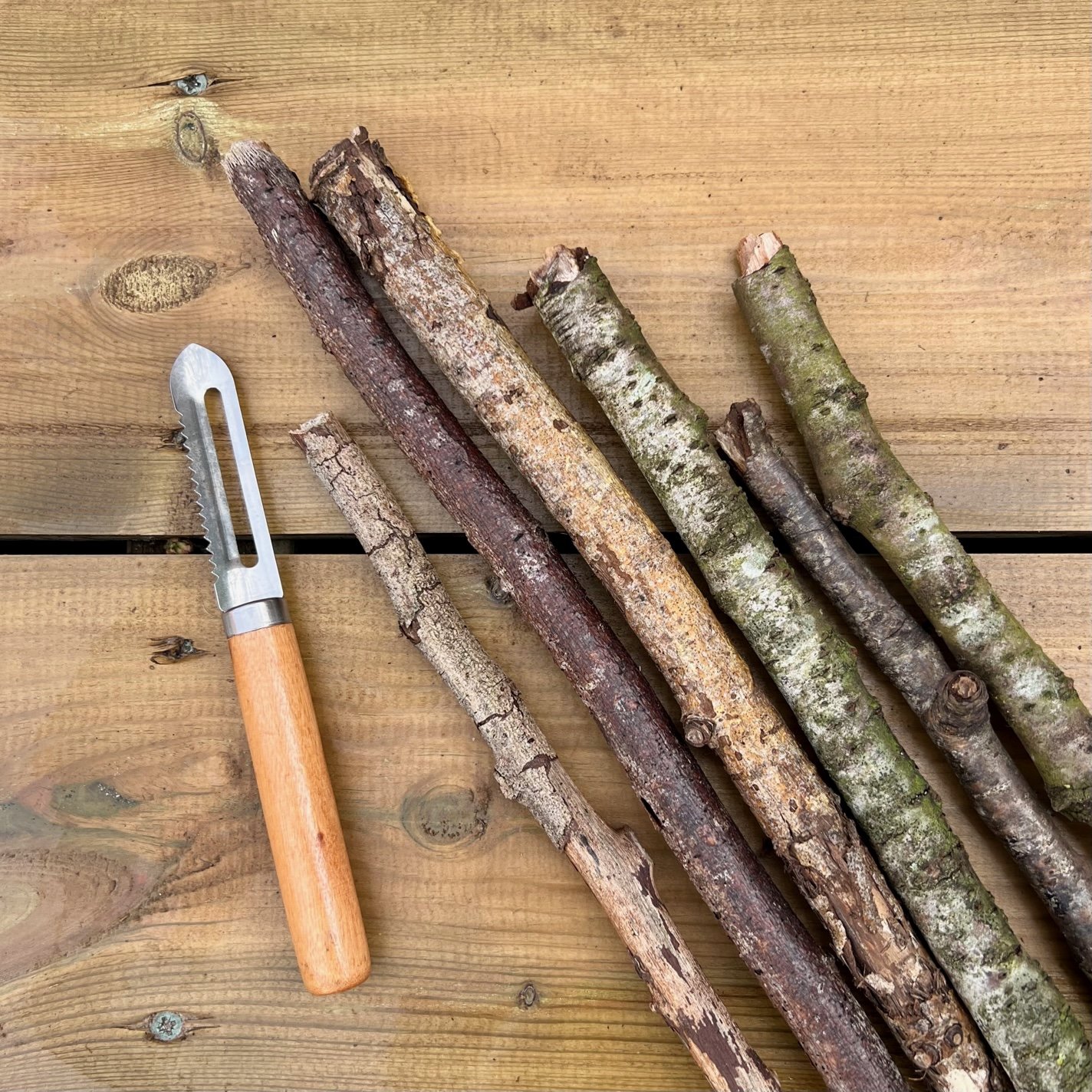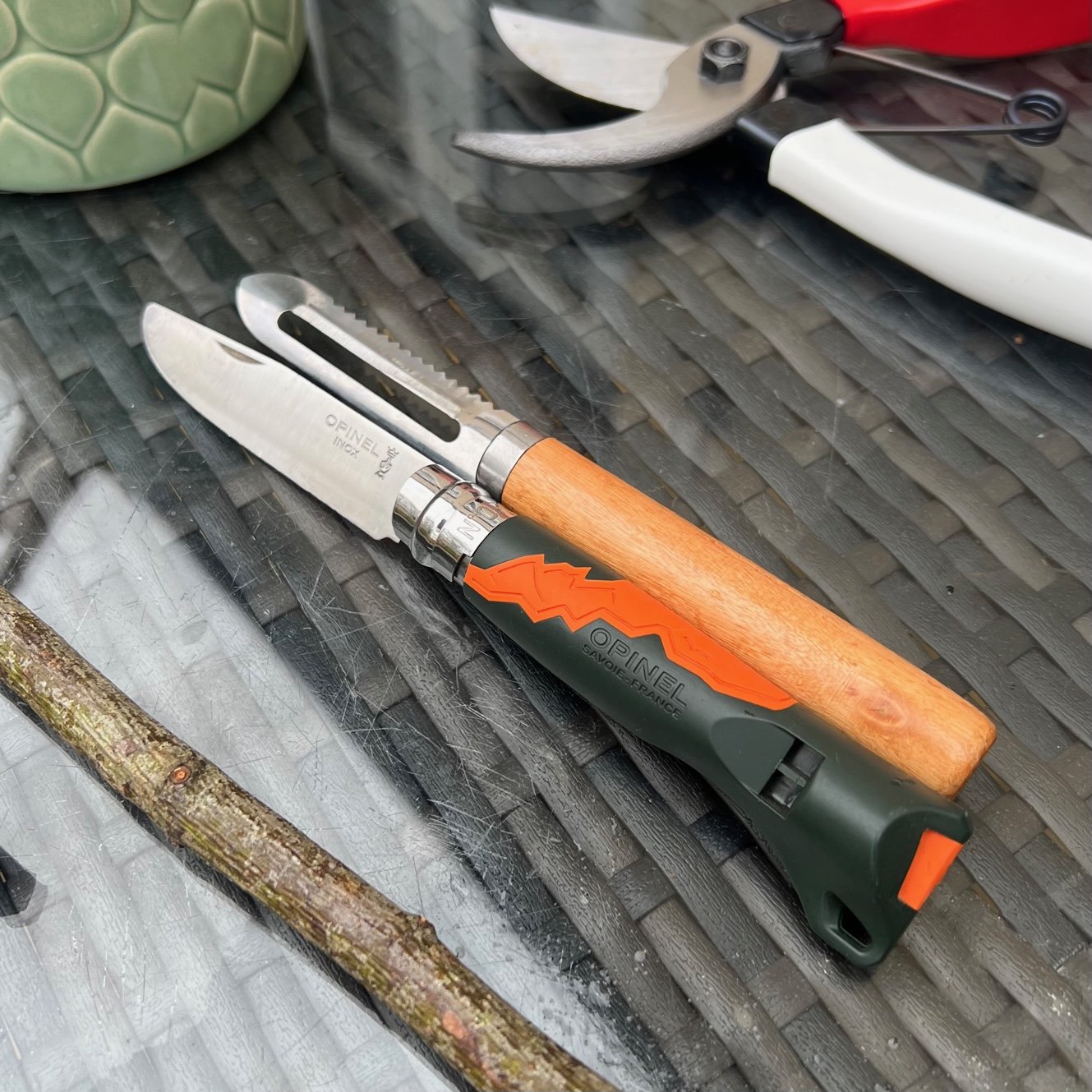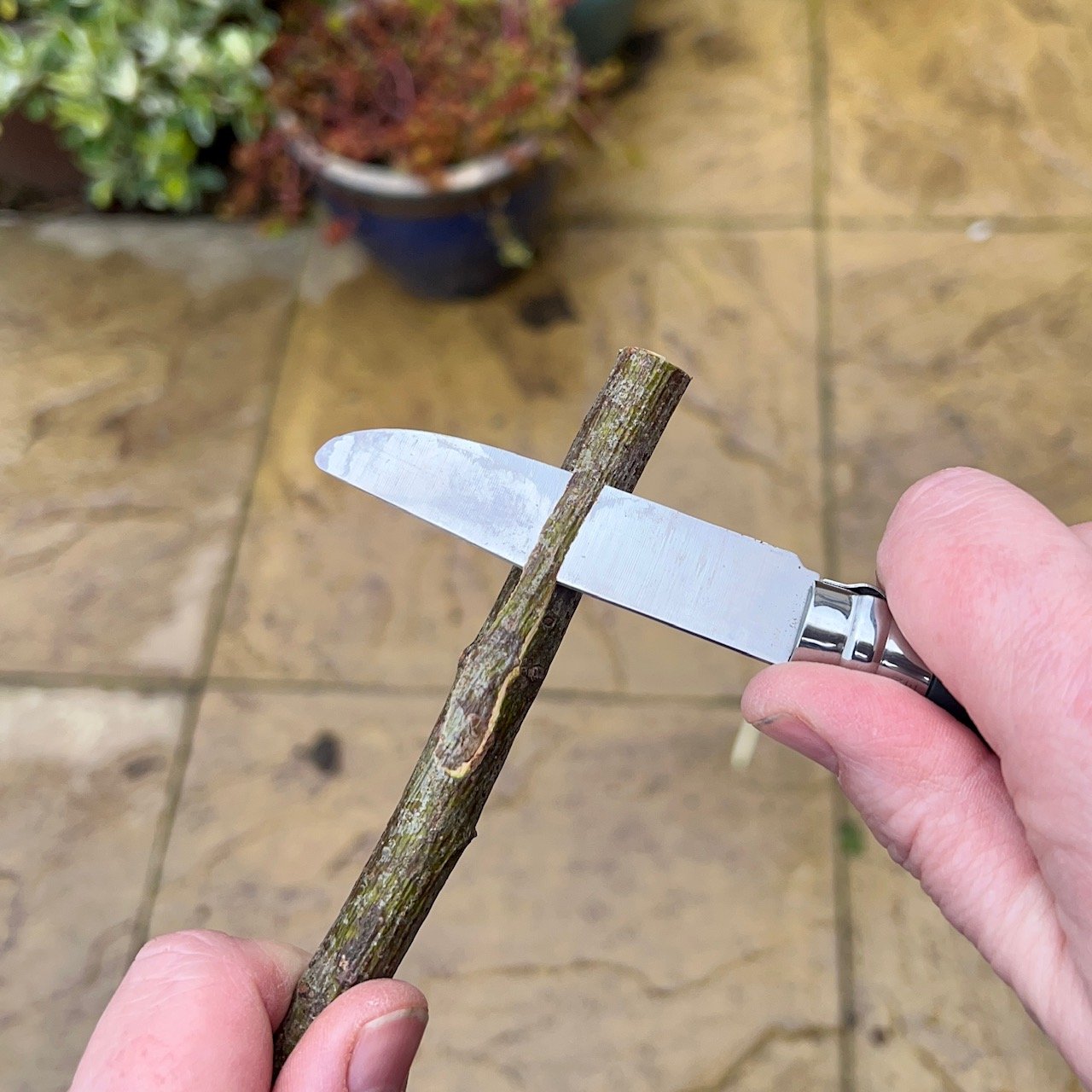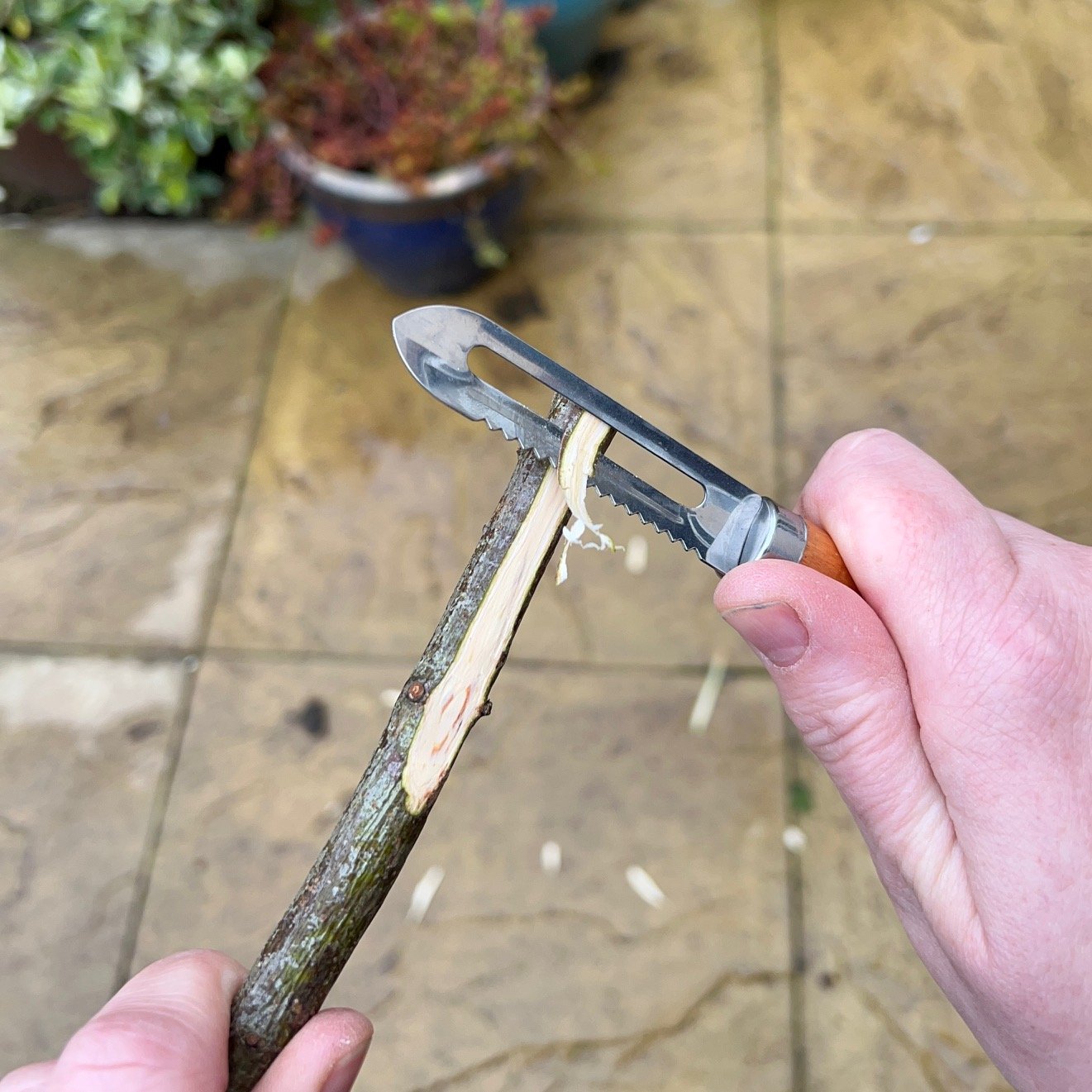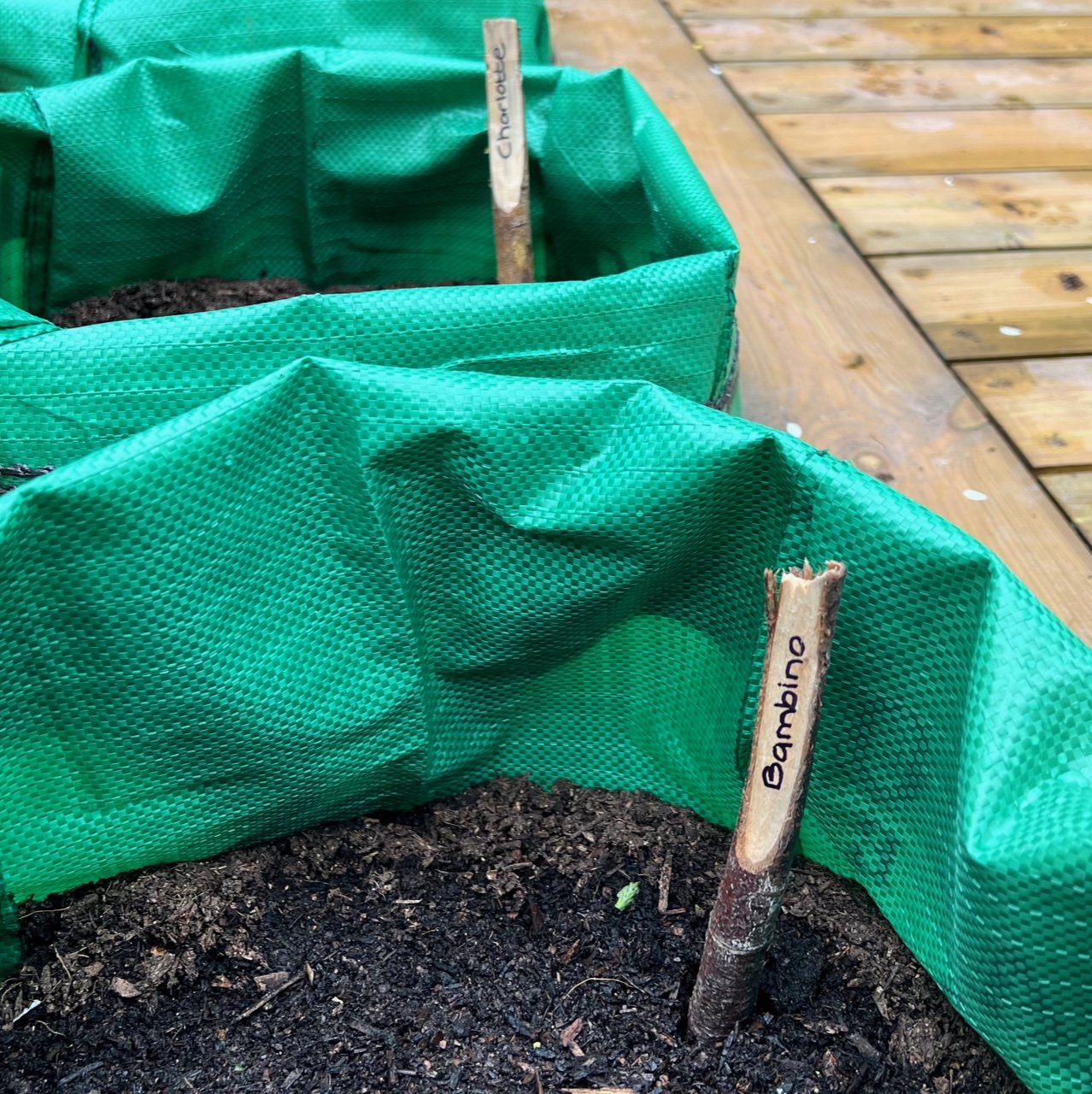Stick plant markers
If you’re planting out new plants in your garden or in pots this season or sowing seeds directly outdoors, then these garden stick plant markers are a must have! This is a great activity for children to help with as they’re really simple to make and it’s a great way to start whittling.
For tips and information about whittling safely, have a look at our blog on how to make whittled stick characters.
What you will need:
Sticks - These can be of varying thickness - thinner ones are better for plant pots and thicker ones for in the ground. Make sure they’re not dried out and brittle and try to avoid sticks with lots of knots and nobbles!
Secateurs
A whittling tool - A peeler is a great tool for young children or children new to whittling, providing a safe and easy way to learn how to hold and use a carving tool. Older or more experienced children can use a knife. A lightweight whittling tool is available to purchase from our online shop.
A permanent marker pen
What you need to do:
First you will need to cut your sticks down to size with your secateurs - about 20-25cm works well for planting in the ground. Thinner, slightly shorter sticks are good for pots.
Choose the smoothest, straightest end for the top of your plant marker and carefully use a knife or peeler to scrape off the layer of bark. Strip away a few more layers of wood until you have a nice flat surface for writing on.
Next use your whittling tool to carve the bottom end of the stick into a point. The tip doesn’t need to be sharp, but having a point helps make it easier to push the stick into the soil. You can also just use your secateurs to cut the bottom of the stick at an angle if you prefer though I quite enjoyed sitting in the garden, whittling my sticks!
Use a permanent marker pen to write your labels.
Now your plant markers are ready to get to work! I’ve used these markers to label the different varieties of potatoes that I have growing in bags, in my pots of herbs so that my children can collect some herbs for me when I cook and also to mark my perennial plants so I don’t accidentally dig them up or plant on top of them when they are dormant!
Author: Denise Hope, home educating mum of two boys
If you’d like to receive regular gardening activities like this, subscribe below to receive a monthly Mud & Bloom gardening box! Each monthly gardening box contains two lots of seeds or bulbs to plant along with detailed instruction cards, jobs to do in the garden this month and a spotter card.


